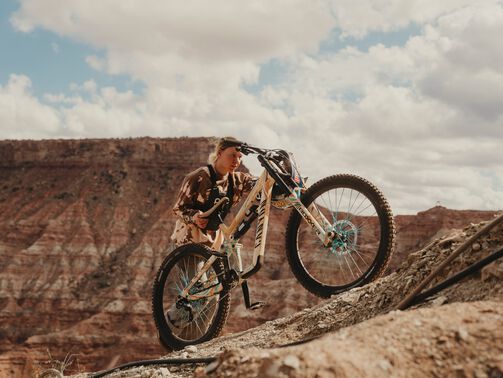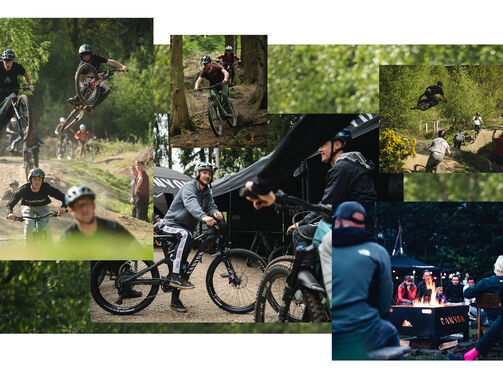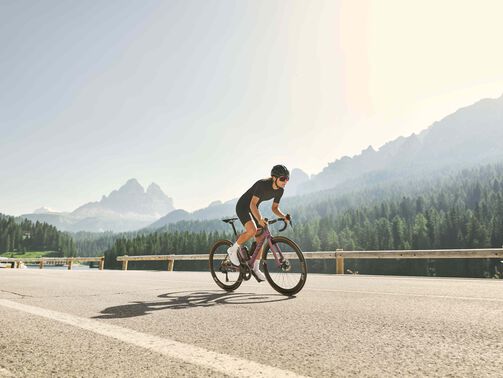How to choose the best lightweight climbing bike: Your ultimate buying guide
When you want to take your climbing to another heights, Canyon offers the bikes you need.
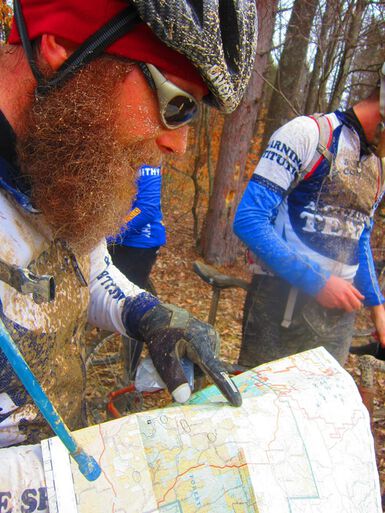
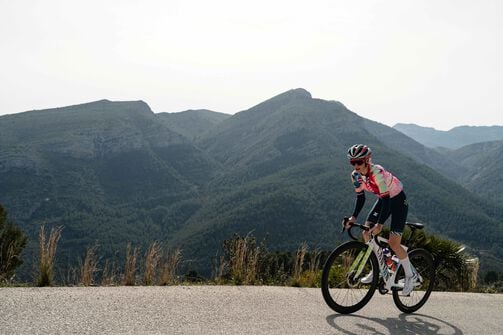
In cycling, climbing the tallest and steepest mountains have always held a certain allure. When thinking of the greatest Giro d’Italia or Tour de France stages, rarely do the sprint finishes to the front of the brain. (With all-due respect to greats like Mark Cavendish or André Greipel.) Andy Hampsten’s brave solo up the snowy Gavia Pass en route to his lone Giro victory or Eddy Merckx incredible Tourmalet performance in the 1969 Tour. Every cyclist dreams of reaching similar heights, even if it’s just summiting that steep hill before their riding buddies on the weekend training ride.
The toughest climbs push you to your absolute limit, so you need to find and take advantage of every advantage possible, such as a climbing road bike like the Canyon Ultimate. If you prefer a less-race oriented bike that keeps you more comfortable on both the hills and flats, the Aeroad could be an option for you.
Contents
What makes a great climbing road bike?
Canyon engineers know a lot of factors go into making a best-in-class climbing bike. First off, you need not only a lightweight frame, but also one that’s reinforced in spots like the bottom bracket and chainstays to maximize power transfer. You need a quality groupset with climber-friendly gearing, such as a 50/34 compact crank paired with an 11-32 or 11-34 cassette. And while the frame has to be super lightweight on the way up, it also needs to be stable for those hair-raising descents as well. Add them all up, and you have the Canyon Ultimate.
Why lightweight design is crucial for climbing performance
When going uphill, every pound can feel like a ton. That’s why Canyon has eliminated every extraneous ounce from their climbing bikes, so that they come in at or even below the 6.8 kg (15 lbs) weight limit for professional racers. For example, the Ultimate CFR Di2 utilizes super-thin carbon tubes with specially placed reinforcement patches to come in at a mind-boggling 6.3 kg (13.94 lbs), without sacrificing stiffness or durability.
Both the aero cockpit and carbon seatpost have been redesigned to shed extra weight while remaining strong enough for the most grueling rides.
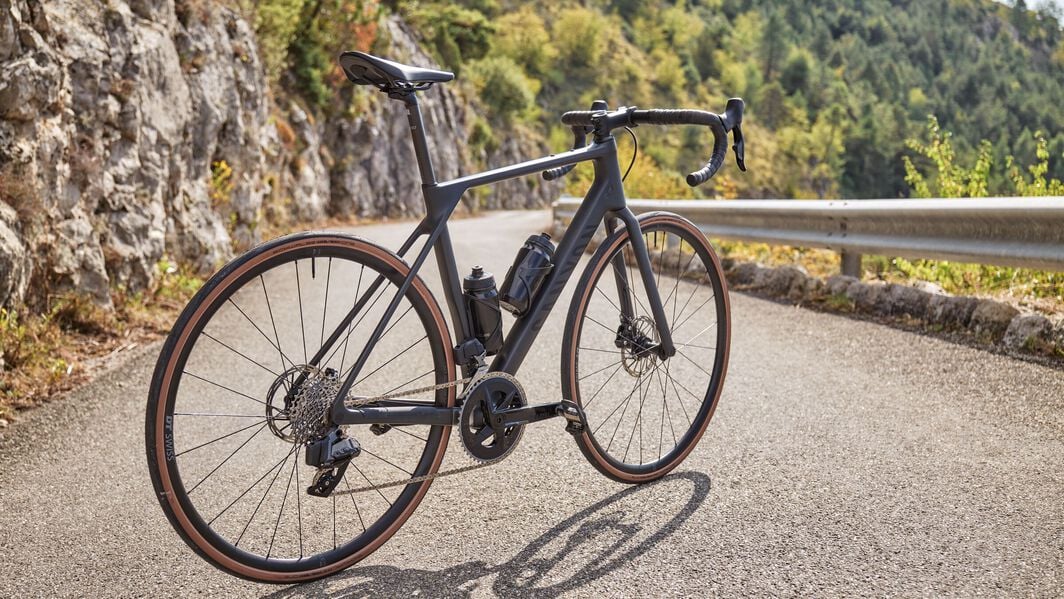
Key features that define the best climbing road bikes
So what should you be looking for when purchasing a new climbing bike?
Frame materials and construction
Due to its elite strength-to-weight ratio, carbon reigns as the frame material of choice for nearly every manufacturer of climbing road bikes. Canyon’s proprietary CF SL carbon blend balancing strength and weight is primarily used on their entry-level climbing bicycles, while enthusiast-level bikes are constructed with the higher-end, more advanced CF SLX grade. Canyon uses their most advanced, highest quality CFR grade for their professional-level bicycles, when every ounce can mean the difference between a stage win or rainbow jersey.
Using years of working with professional teams like Movistar and Alpecin-Deceuninck, Canyon engineers know how to manipulate and layer that carbon fiber to create elite racing frames.
Geometry and handling characteristics
You need more than lightweight materials to craft the perfect climbing bike; geometry also plays a huge role. Canyon engineers designed the Ultimate CFR Di2 with a steep 73.3-degree head tube angle, making the bike more agile and responsive. (The Aeroad CFR AXS has a more relaxed 72.5-degree angle.) The Ultimate’s 988 mm wheelbase is short enough for aggressive maneuvering in a pack, while also being stable in the descents.
For a detailed breakdown, learn about road bike geometry and how variations in race, endurance, aero, and cyclocross designs impact comfort and performance.
Components for climbing efficiency
Top-of-the-line bicycles like the Ultimate CFR Di2 or the Aeroad CFR AXS typically are equipped with a Shimano Dura-Ace or SRAM Red groupset offering exceptional performance at the lowest possible weight. During a difficult climb, you need a groupset you can depend on, one that makes reliable shifts every time. The last thing you want to do on a steep ascent is drop your chain and lose your momentum upward.
Less-expensive climbing bikes like the Ultimate CF SLX 8 typically come with your choice of Ultegra Di2 or Force AXS, both of which work exceptionally well with a slight weight penalty. All three Ultimate CF 7 models come with Shimano 105 components, which weigh slightly more than the Ultegra alternative, while offering similar performance.
Ready to level up your ride? Explore our expert guide to road bike groupsets and see what sets each one apart.
Wheels and tires for climbing performance
Often overlooked, a bike’s wheels and tires can be a huge factor when it comes to climbing performance. The lighter the wheels, the lower the rotational mass, which equates to faster climbing. Low-profile rims typically weigh less and are better for climbing, while deeper rims typically weigh more, but are more aerodynamic for less-steep hills and flats.
For example, the Ultimate CFR Di2 features low-profile DT Swiss PRC 1100 Dicut Mon Chasseral wheels paired with Schwalbe Pro One tires, weighing just over 1.36 kg (3 lbs). The Ultimate CF SLX 8 Di2 combines DT Swiss ARC 1400 Dicut wheels and Pirelli P Zero Race RS tires at around 2.07 kg (4.57 lbs), while the Endurace CF SLX 8 AXS AR60’s Reynolds AR60 wheels and Continental Grand Prix 5000 S TR tires tip the scales just under 2.27 kg (5 lbs).
While these weight differences may seem small on paper, they add up on long climbs - lighter wheelsets accelerate more easily and respond faster to changes in gradient. However, a slightly heavier, more aerodynamic setup can be advantageous on rolling terrain or mixed routes where maintaining speed matters more than pure climbing efficiency.
Inflating your tires to a higher PSI decreases rolling resistance and increases your speed, but at the expense of comfort on rougher roads. So, every PSI counts... Learn how dialing in your tire pressure can transform your ride in our road bike tyre pressure guide.
Higher-end bikes also tend to feature higher-TPI (threads per inch) tires. TPI refers to how tightly woven the fabric inside the tire casing is – a higher TPI means a finer weave, resulting in a lighter, more supple tire that can better adapt to the road surface. This improves ride feel and grip, especially on long climbs or uneven tarmac. For instance, the Schwalbe Pro One has 127 TPI, compared to the typical 60–100 TPI range found on most standard tires.
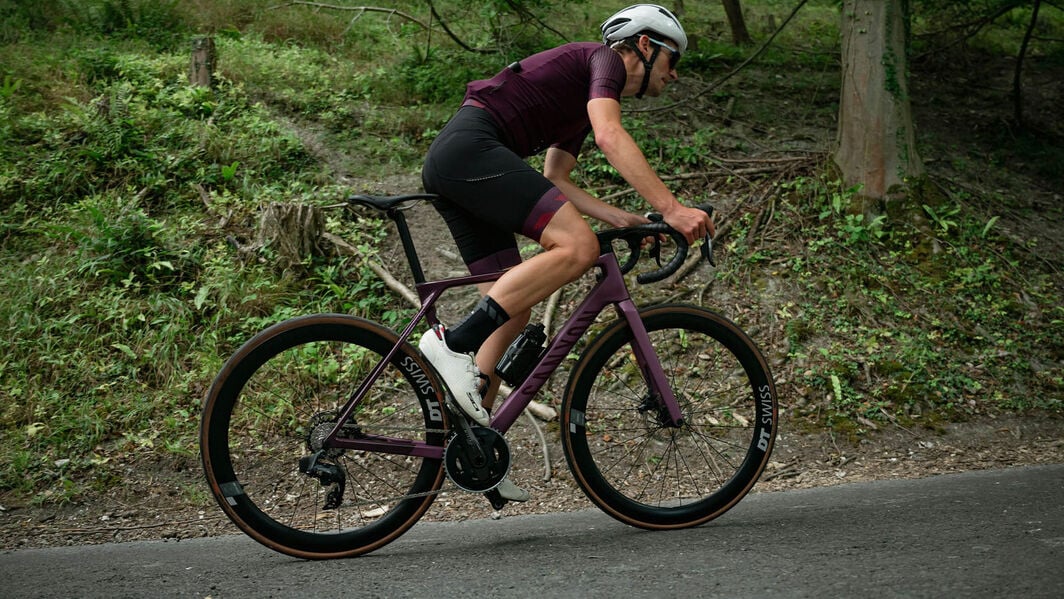
Top Canyon climbing road bikes and how to choose yours
Although the Ultimate is considered the primary climbing bike in Canyon’s arsenal, you have other choices as well.
Endurace – For riders tackling long elevation days
For riders who want to conquer hills in a bit more comfort, the Endurace is built with a more relaxed geometry that keeps riders a bit more upright and less stretched out. The various models in the Endurace line are ideal for fast-paced group rides, gran fondos, and all-day epics. But make no mistake, when the road points upward, these bikes are among the lightest in their class and more than capable on the uphills.
Aeroad – When climbing meets racing speed
The road bike of choice for former world champion Mathieu van der Poel, the Aeroad was designed to cheat the wind and win the biggest bike races in the world. If your rides are a mix of flats and hills, the Aeroad may be your best choice; the more aerodynamic tubes used on the Aeroad will save riders 7.4 watts at 28mph (45kph) compared to previous generations of that model, meaning you’ll be faster on the flats and fresher when you reach the hills. While not quite as featherweight as the Ultimate, the Aeroad is among the lightest in its class.
Ultimate – the pro-level all-rounder for serious climbers
If you were designing the perfect climbing bike, it would look and ride a lot like the Canyon Ultimate. It’s incredibly light and nimble, and stiff where it counts. The Ultimate has been the ride of choice for multiple Grand Tour winners including Nairo Quintana, as well as world champions like van der Poel.
When to consider an e-road bike for climbing
If you need an extra boost up the mountain, the Endurace:ONfly is perfect for older riders, returning cyclists, or riders tackling huge mountain passes. A mid-level CF 7 is just over 25 pounds but feels lighter thanks to the TQ-HPR40 motor that uses adaptive software that adjusts its power delivery to your needs. It can feel like a tailwind pushing you uphill (Availability may vary by region, so be sure to check if the Endurace:ONfly is offered in your country.)
Climbing upgrades to enhance your current road bike
Not ready to buy a new bike yet? Here are a few suggestions to make your current bike more of a climbing machine.
- Carbon wheels for climbing. Replacing the stock aluminium wheels on your old bike will almost always save a pound or three. This is the first and best option for most riders.
- Compact crankset or cassette change. If you’re riding a standard crankset, swap it out for a compact. Replacing an 11-25 or 11-28 cassette with an 11-34 will allow you to more easily spin uphill.
- Weight-saving accessories. Replacing your saddle, handlebars, or pedals with lighter options could add up to a pound or more in weight savings. Just make sure the replacements offer similar comfort and properly fit your particular bike.
If you’re paying for multiple improvements to your current bike, it may be more cost-effective in the long run to start with a clean slate, like a new Canyon.
Aerodynamics vs. weight: Finding the right balance
Buying either the lightest or most aero bike isn’t always the best option in the real world; finding the best blend of both should be your objective. On the flats, aero tubing slices through the wind, making you faster and allowing you to conserve more energy for the climb ahead. Likewise, featherweight climbing bikes jettison every unneeded ounce, allowing you to spin easier uphill.
Canyon’s erstwhile climbing bike the Ultimate uses aerodynamic-shaped tubes, while the Aeroad is among the lightest in its category. The terrain where you live and ride will help you determine which is the appropriate bike for you.
Need a bit more help choosing the right road bike? Explore our road bike buyer’s guide for expert insights, or start with our beginner’s road bike buying guide if you’re new to the sport. You can also use our Bike Finder tool to get personalized recommendations, and the Bike Comparison Tool to see how your top picks stack up - making it easier than ever to find your perfect Canyon.
Final thoughts – Why Canyon leads in climbing bike innovation
For years, Canyon bikes have been found at the front of the professional peloton; riders and engineers continue to work hand in hand to keep that dominant streak going into the future.
“Canyon has been an incredible partner,” van der Poel said when he signed a historic 10-year contract with Canyon last year. “We have developed bikes that have helped me succeed in Classics, World Championships, and Grand Tours. But I’m still incredibly hungry for success.
"In road, cyclocross and mountain biking, Canyon’s research and development teams devote everything to creating bikes to win races, and I'm proud to fuel those product developments,” van der Poel continued. “We share the same winning mentality and, with this new contract, we're fully aligned on our ambitions for the next stage of my career."
The success of van der Poel, his Alpecin-Deceuninck, and other Canyon-sponsored athletes fuels new bicycle technology and designs, allowing everyday Canyon riders to fully achieve their own goals.
So, keep pushing, keep climbing – see you at the summit.
Discover our Gravel Bikes
Did this article help?
Thank you for your feedback
-
 About the author
About the authorRobert Annis
Robert Annis is an award-winning outdoor-travel journalist. As an experienced writer and sport enthusiast he writes content that is inspiring with focus on road biking. You might have read Robert's articles in Bicycling, National Geographic, Outside, Travel + Leisure, Inside Hook, AARP, Midwest Living, Sierra, Hemispheres, Departures, Lonely Planet, Afar, Los Angeles Times, Chicago Tribune, RV Magazine, and Hidden Compass.





